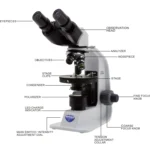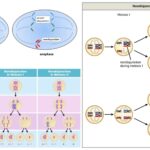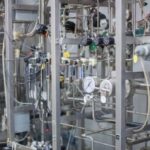Describe the role of artificial selection in the production of economically important plants and animals
Describe the role of artificial selection in the production of economically important plants and animals
Please login to submit an answer.
Artificial selection, or selective breeding, plays a significant role in the production of economically important plants and animals. This process involves humans intentionally choosing specific traits to enhance desired characteristics in various species, ultimately leading to improved agricultural productivity and livestock quality. Here’s how artificial selection contributes to this goal:
(a) Selection by Humans of Animals or Plants with Desirable Features
Humans identify and select individuals with traits that are beneficial for economic purposes. For example:
- Crops: Farmers may choose plants that yield larger fruits, have better pest resistance, or possess improved nutritional content. For instance, crops like corn have been selectively bred for higher yields and better resilience against environmental stressors.
- Livestock: Breeders select animals based on desirable traits such as high milk production in cows, rapid growth rates in chickens, or specific meat qualities in pigs. The Holstein cow, known for its high milk yield, is a prime example of artificial selection in dairy farming.
(b) Crossing These to Produce the Next Generation
Once desirable traits are identified, breeders cross selected individuals to produce the next generation:
- Controlled Breeding: This can involve techniques such as artificial insemination or controlled pollination. For example, in dairy cattle, sperm from high-yield bulls is used to inseminate multiple cows, ensuring that the offspring inherit the beneficial traits of their parents.
- Hybridization: In plants, crossing different varieties can lead to hybrids that exhibit enhanced characteristics such as disease resistance or increased yield.
(c) Selection of Offspring Showing the Desirable Features
After producing a new generation, breeders evaluate the offspring for the presence of desired traits:
- Evaluation Process: Offspring are assessed based on specific criteria related to the traits being targeted. For instance, only those chickens that lay a higher number of eggs or those plants that produce larger fruits are selected for further breeding.
- Culling: Individuals that do not exhibit the desired features may be removed from the breeding population to ensure that future generations are more likely to express beneficial traits.
(d) Repetition Over Many Generations
The process of selection and breeding is repeated over many generations:
- Cumulative Improvement: By continuously selecting and breeding individuals that exhibit desirable traits, breeders can significantly enhance these characteristics within a population over time. This repetition allows for the establishment of stable varieties or breeds that consistently perform well under agricultural conditions.
- Long-Term Goals: For example, through generations of selective breeding, crops like broccoli and cauliflower have been developed from wild mustard plants. Similarly, livestock breeds have been refined to improve productivity and adaptability.
- Share on Facebook
- Share on Twitter
- Share on LinkedIn
Helpful: 0%




